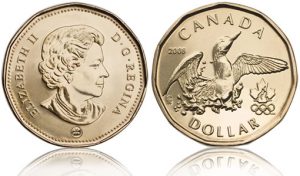 Yesterday’s trade saw USD/CAD within the range of 1.1799-1.1997. The pair closed at 1.1960, gaining 0.08% on a daily basis.
Yesterday’s trade saw USD/CAD within the range of 1.1799-1.1997. The pair closed at 1.1960, gaining 0.08% on a daily basis.
At 9:19 GMT today USD/CAD was up 0.22% for the day to trade at 1.1981. The pair touched a daily high at 1.1985 during the Asian session.
Fundamentals
United States
Consumer prices
The annualized consumer inflation in the United States probably continued to decelerate in December, falling to 0.7%, according to market expectations, from 1.3%, registered in November. If so, this would be the lowest rate since October 2009, when an inflation of -0.2% was reported. In monthly terms, the Consumer Price Index (CPI) probably dropped 0.4% in December, after another 0.3% fall in the prior month. If so, this would be the largest monthly decrease in six years. In November energy prices dropped 4.8% year-on-year, as prices of energy commodities lowered 10.2%, gasoline prices went down 10.5% and cost of fuel oil declined 10.1%. Food prices, on the other hand, rose at an annualized rate of 3.2% in November, while cost of electricity was up 2.8%, according to the report by the Bureau of Labor Statistics.
The CPI is based on a basket of goods and services bought and used by consumers on a daily basis. In the United States the Bureau of Labor Statistics (BLS) surveys the prices of 80 000 consumer items in order to calculate the index. The latter reflects prices of commonly purchased items by primarily urban households, which represent about 87% of the US population. The Bureau processes price data from 23 000 retail and service businesses.
The CPI includes sales taxes, but excludes income taxes, costs of investments such as stocks and bonds and sales prices of homes.
The annualized core consumer inflation, which is stripped of prices of food and energy, probably remained steady at 1.7% in December. It is usually reported as a seasonally adjusted figure, because consumer patterns are widely fluctuating in dependence on the time of the year. The Core CPI is a key measure, because this is the gauge, which the Federal Reserve Bank takes into account in order to adjust its monetary policy. The Fed uses the core CPI, because prices of food, oil and gas are highly volatile and the central bank’s tools are slow-acting. In case, for example, prices of gas surge considerably, this could lead to a high rate of inflation, but the central bank will not take action until this increase affects prices of other goods and services.
If the CPI tends to distance from the inflation objective, set by the Federal Reserve and considered as providing price stability, or 2%, this will usually reduce the appeal of the US dollar.
The Bureau of Labor Statistics is to release the official CPI report at 13:30 GMT.
Industrial production, Capacity utilization
Industrial output in the United States probably remained flat in December compared to November, following a 1.3% expansion in November compared to October. The latter has been the fastest growth rate in more than four years, driven by expansion in manufacturing and utilities production. In November the output of utilities rose 5.1%, as colder-than-usual weather for the month increased demand for heating. Manufacturing production expanded 1.1% in November, with the indexes for both durables and nondurables gaining more than 1%, while the output of every major industry group rose or remained unchanged. The index of mining activity, on the other hand, fell 0.1% during the same period.
The index of industrial production reflects the change in overall inflation-adjusted value of output in the three major sectors mentioned above. The index is sensitive to consumer demand and interest rates. As such, industrial production is an important tool for future GDP and economic performance forecasts. Those figures are also used to measure inflation by central banks as very high levels of industrial production may lead to uncontrolled levels of consumption and rapid inflation. It is a coincident indicator, which means that changes in its levels generally echo similar shifts in overall economic activity. A larger-than-projected increase in the index would usually boost demand for the US dollar.
The Board of Governors of the Federal Reserve is to release the production data at 14:15 GMT.
In addition, Capacity Utilization Rate in the country probably decreased to 80.0% in December from 80.1% in November. The latter has been the highest utilization rate since March 2008, when a rate of 80.4% was reported. This indicator represents the optimal rate for a stable production process, or the highest possible level of production in an enterprise, in case it operates within a realistic work schedule and has sufficient raw materials and inventories at its disposal. High rates of capacity utilization usually lead to inflationary pressure. In general, higher-than-anticipated rates tend to be dollar positive.
Reuters/Michigan Consumer Sentiment Index – preliminary estimate
The monthly survey by Thomson Reuters and the University of Michigan may show that consumer confidence in the United States continued to improve in January. The preliminary reading of the corresponding index, which usually comes out two weeks ahead of the final data, probably rose to 94.1 during the current month from a final value of 93.6 in December. If so, this would be the highest index value in almost eight years. The survey encompasses about 500 respondents throughout the country. The index is comprised by two major components, a gauge of current conditions and a gauge of expectations. The current conditions index is based on the answers to two standard questions, while the index of expectations is based on three standard questions. All five questions have an equal weight in determining the value of the overall index.
The sub-index of current economic conditions decreased to a final reading of 104.8 from a preliminary 105.7 in December, after a month ago it stood at 102.7. The sub-index of consumer expectations came in at a reading of 86.4, up from a preliminary value of 86.1 in December and a final 79.9, registered in November.
In case the gauge of consumer sentiment showed a larger improvement than projected, this would boost demand for the greenback. The preliminary reading is due out at 14:55 GMT.
Demand for the greenback boosted
Demand for safer investments was bolstered, following the SNBs decision to abandon the minimum exchange rate for EUR/CHF yesterday.
“Assets like the U.S. dollar and gold are going to be, at the margin, larger recipients of the safe haven flows which are going around,” Richard Yetsenga, head of global markets research at Australia & New Zealand Banking Group Ltd. said in an interview on Bloomberg Television’s “On the Move” with Rishaad Salamat, cited by the same media. “The fallout from this is not finished yet.”
The largest Swiss bank, UBS Group AG, said that its wealthiest clients were lured to US dollars, due to concerns that the strong franc would have an adverse impact on their businesses and the overall Swiss economy.
UBS revised down its forecast for Switzerland’s growth to 0.5% this year from 1.8% and to 1.1% in 2016 from 1.7% previously. The bank also reduced its inflation rate projection for 2015, pointing to a 0.6% drop in consumer prices, while it earlier projected a 0.2% increase.
Pivot Points
According to Binary Tribune’s daily analysis, the central pivot point for the pair is at 1.1919. In case USD/CAD manages to breach the first resistance level at 1.2038, it will probably continue up to test 1.2117. In case the second key resistance is broken, the pair will probably attempt to advance to 1.2236.
If USD/CAD manages to breach the first key support at 1.1840, it will probably continue to slide and test 1.1721. With this second key support broken, the movement to the downside will probably continue to 1.1642.
The mid-Pivot levels for today are as follows: M1 – 1.1682, M2 – 1.1781, M3 – 1.1880, M4 – 1.1979, M5 – 1.2078, M6 – 1.2177.
In weekly terms, the central pivot point is at 1.1828. The three key resistance levels are as follows: R1 – 1.1929, R2 – 1.1990, R3 – 1.2091. The three key support levels are: S1 – 1.1767, S2 – 1.1666, S3 – 1.1605.





